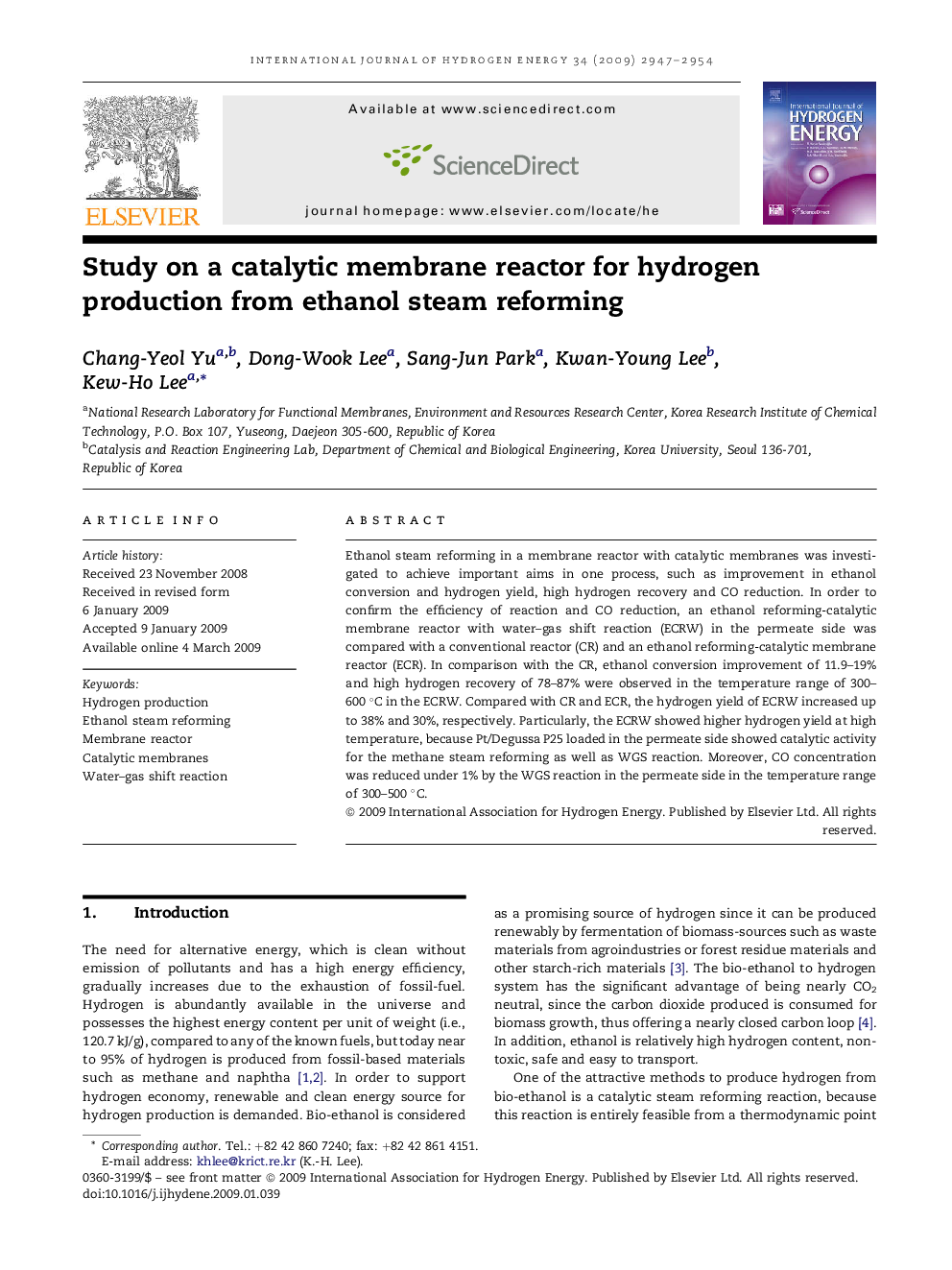| Article ID | Journal | Published Year | Pages | File Type |
|---|---|---|---|---|
| 1283226 | International Journal of Hydrogen Energy | 2009 | 8 Pages |
Ethanol steam reforming in a membrane reactor with catalytic membranes was investigated to achieve important aims in one process, such as improvement in ethanol conversion and hydrogen yield, high hydrogen recovery and CO reduction. In order to confirm the efficiency of reaction and CO reduction, an ethanol reforming-catalytic membrane reactor with water–gas shift reaction (ECRW) in the permeate side was compared with a conventional reactor (CR) and an ethanol reforming-catalytic membrane reactor (ECR). In comparison with the CR, ethanol conversion improvement of 11.9–19% and high hydrogen recovery of 78–87% were observed in the temperature range of 300–600 °C in the ECRW. Compared with CR and ECR, the hydrogen yield of ECRW increased up to 38% and 30%, respectively. Particularly, the ECRW showed higher hydrogen yield at high temperature, because Pt/Degussa P25 loaded in the permeate side showed catalytic activity for the methane steam reforming as well as WGS reaction. Moreover, CO concentration was reduced under 1% by the WGS reaction in the permeate side in the temperature range of 300–500 °C.
